Stretches For Runners To Help Speed Up Your Recovery
A little post-run stretching goes a long way

Every runner knows you should do some stretches as part of your weekly training, just like everyone knows you should eat at least five servings of fruit and veg a day. But knowing something and doing it are very different things, and finding the time to fit in even a short stretching session regularly is not always easy.
To help make it that little bit easier, we enlisted Omar Mansour and Rory Knight – running coaches and trainers on the WithU fitness app – for five stretches for runners that take just 10 minutes to run through. If you are following a running training plan, then making this routine the cornerstone of your post-run recovery plan will help you bounce back from tough sessions and hopefully reduce your risk of picking up common running injuries.
Once you’re convinced of the merits of stretching you might want a longer routine to try, in which case you can add in some extra stretches that suit runners; they’re recommended by strength and conditioning coach Richard Tidmarsh, founder of Reach Fitness, and you’ll also find these below.
If you’re looking at other ways to improve your recovery then this five-move yoga for runners session is also worth investigating and these post-run stretches will add variety to your routine, along with adding these foam rolling exercises to your regime. This has to come on top of nailing your sleep and nutrition, however – all the foam rolling and stretching in the world won’t help your running if you’re eating poorly and sleeping four hours a night.
Stretches For Runners: 10-Minute Post-Run Routine
Aim to do this routine from Mansour and Knight as often as you can. Do each stretch for 20-30 seconds and repeat a few times.
1 Calf/achilles stretch
The feet and ankles take the brunt of the force during running. During the drive phase the calf and achilles tendon are contracted, with the foot supporting the body’s weight as force is transferred into the ground to propel you forwards. Over time the calves and achilles tendons strengthen and can become tighter. It’s important to dorsiflex (raise your toes) after running to correct this.
Stand with your feet shoulder-width apart, bend one knee and place more weight on that foot so the knee travels over your toes. You should feel a slight stretch in your heel and achilles. To increase the stretch you can place a small book under your toes.
Sign up for workout ideas, training advice, reviews of the latest gear and more.
To properly stretch your calves, find a step or yoga block and place your toes on it. Then allow your heels to sink lower and lower. You will feel a deep stretch in your calves.
2 Hamstring stretch
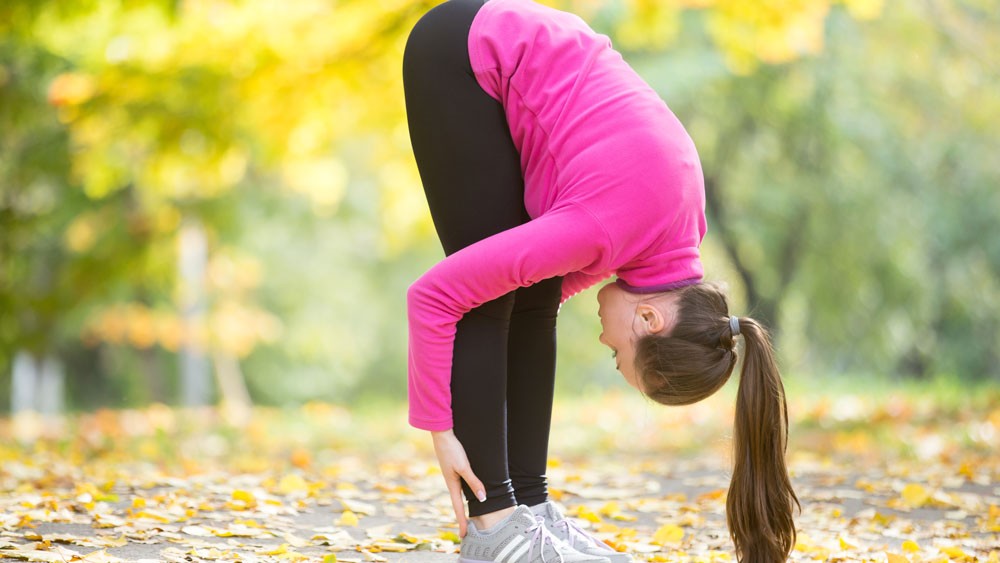
The hamstrings are a classic area of tightness in runners. The knees always remain slightly bent throughout the running gait, meaning the hamstrings never fully lengthen. You also use your hamstrings to lift the foot after the drive phase, to swing the leg to the front. The lower back is also a common area of tightness, and you can stretch both the hamstring and lower back in one movement.
Stand with your feet slightly narrower than shoulder-width apart. Bend forwards and try to touch your toes, pushing your hips backwards and keeping a rounded back. You will feel a stretch in your hamstrings and your lower back.
To increase the stretch in your lower back, squat down slightly, bend your knees and clasp your arms together behind your kneecaps. Slowly begin to straighten your legs, keeping your arms secured behind your knees. You will feel the stretch pressure increase in your lower back.
Once your lower back has loosened, return to the initial stretch. This time try to keep your lower back flat, or even slightly extended (arched) as you bend to touch your toes. This will place the emphasis on the hamstrings.
3 Hip flexor stretch
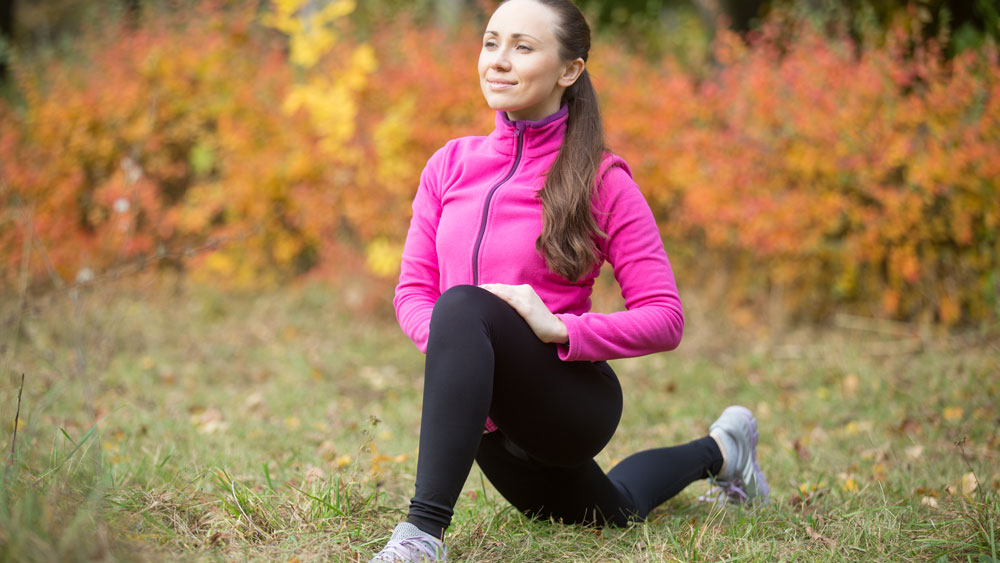
Almost everyone has tight hip flexors. Spending hours sitting down with your legs at a 90° angle to your torso means your hip flexors become tighter and shorter, and this is often a cause for back pain because it causes your pelvis to tilt forwards, causing pressure on the lumbar spine. Running can tighten them even further, so stretching them is very important.
Perform a long lunge and drop your trailing knee to the floor. Keep your front knee bent at around a 90° angle and lean your weight into the front leg to stretch the rear hip. For an additional stretch you can lift your trailing foot and pull it into your glutes.
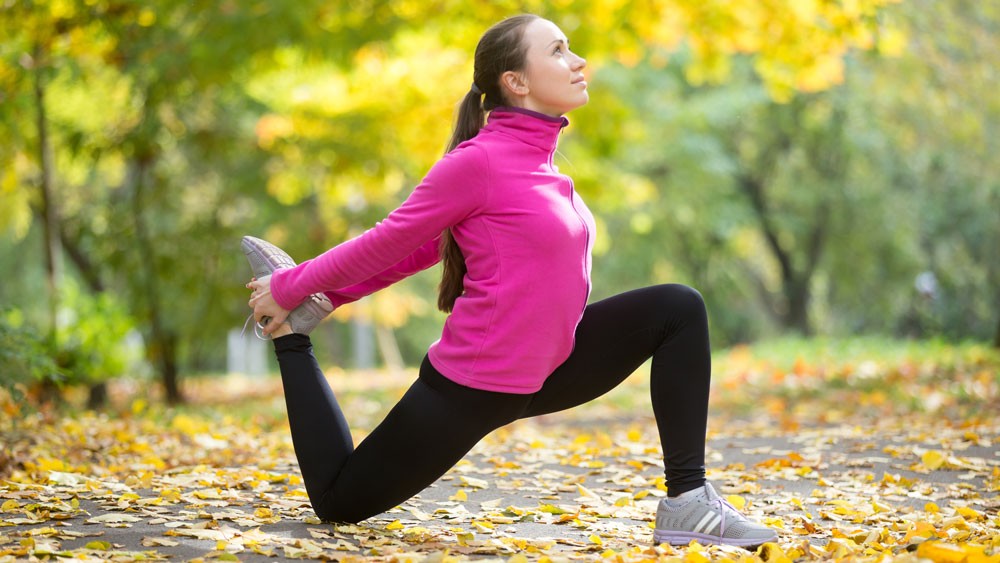
4 Chest-opening stretch
Another stretch that is imperative for runners and office workers is one that opens up the chest. Whether you’re on the road or in front of the computer, your upper-body posture is usually hunched over with a rounded upper back. It’s important that any additional strength training works to strengthen the upper back and pull the shoulders back. But for stretching, opening up the chest is very important.
Stand side-on to a wall with your feet shoulder-width apart and the outside of one foot against the wall. Lift the arm closest to the wall behind you and place the palm against the wall around chest height. Begin to rotate your upper body in the opposite direction to increase the stretch in the chest and shoulder.
5 Neck stretch
Running can also put strain on the neck extensors – the muscles on the back of the neck. Looking forwards with a rounded upper back places a lot of stress and tension on the base of the neck, so it’s important to stretch that area.
Lie down on the floor on your back. Using your neck muscles, lift your head by tucking your chin into the front of your neck – this ensures you are activating the neck flexors (front neck muscles). Lift your head as high as you can, trying to touch your upper chest with your chin. Then place your hands behind your head and apply steady pressure to lift your head further, increasing the stretch on your neck extensors.
More Stretches For Runners
Pigeon
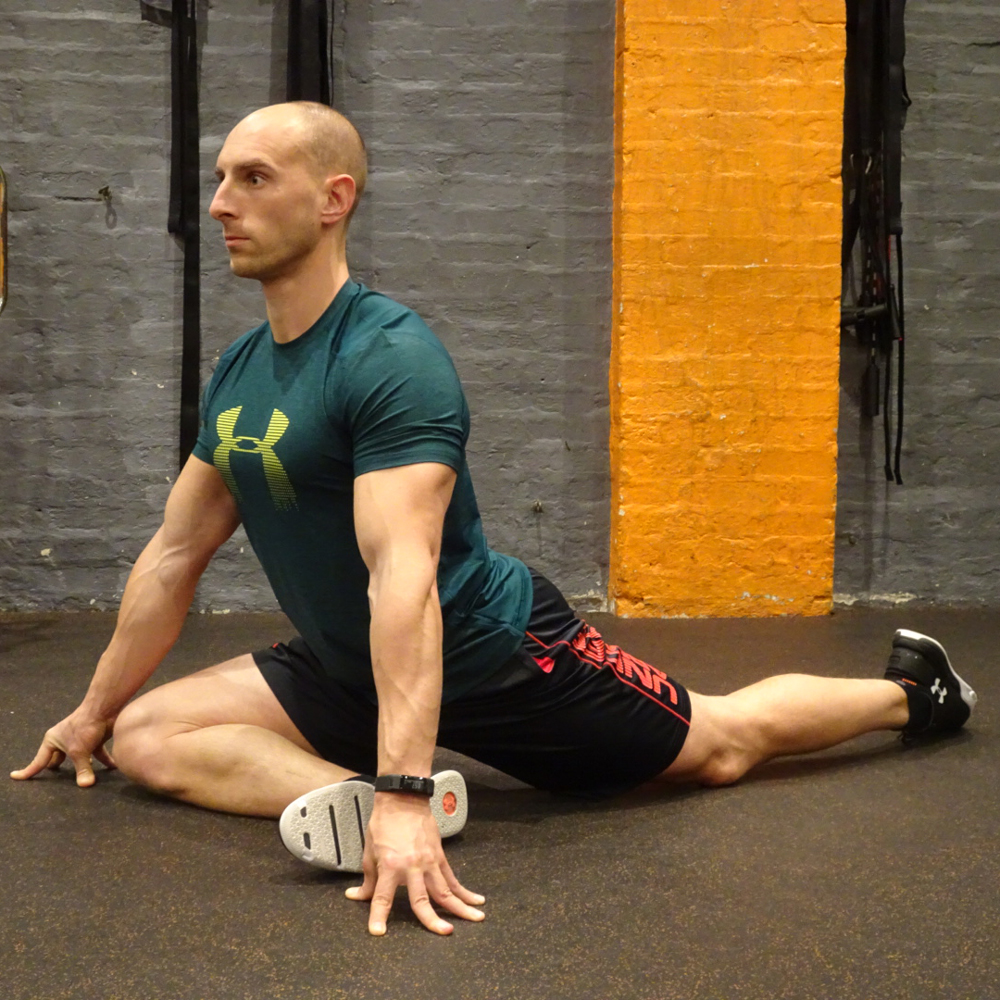
“From a press-up position, bring your right leg up and place it so your knee is by your right wrist and your right foot is by your left wrist, with your shin parallel to your chest,” says Tidmarsh. “From this position sit down into the stretch, initially keeping your chest up and making sure your hips are square with your shoulders. Then slowly drop your chest forwards and hold the stretch for 30 seconds. You will feel a deep stretch in your right glute and lower back. Breathe, stretch and enjoy. Then repeat on the other side.”
Jiu jitsu
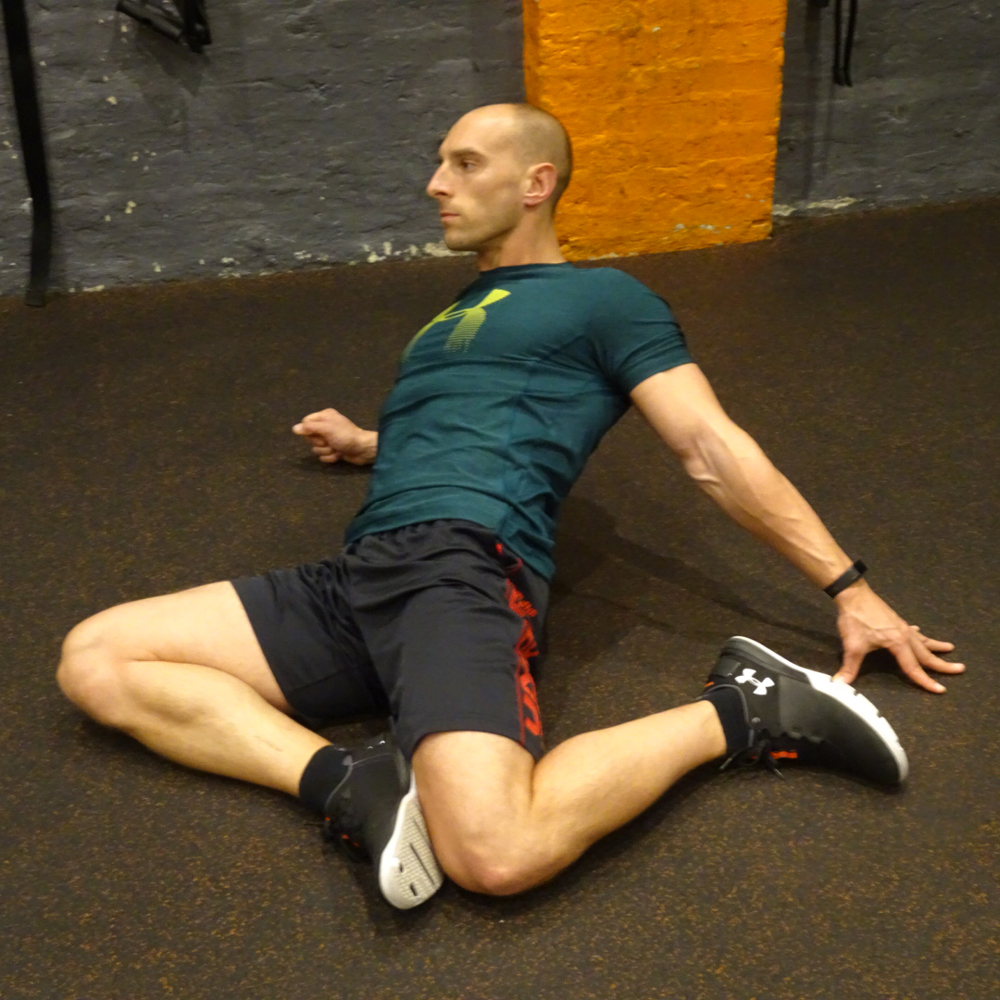
“This is a great move to open your hips and stretch your quads after a run,” says Tidmarsh. “Sit on the floor with your legs out straight. Then bend your right leg and place the sole of your right foot on your left thigh. Then bend your left leg out to the left. Then place your right elbow on the floor behind you (if you can) and feel the stretch in your right hip and left quad. To increase the stretch, place your elbow further away from you. Hold for 30 seconds, then repeat on the other side.”
Scorpion
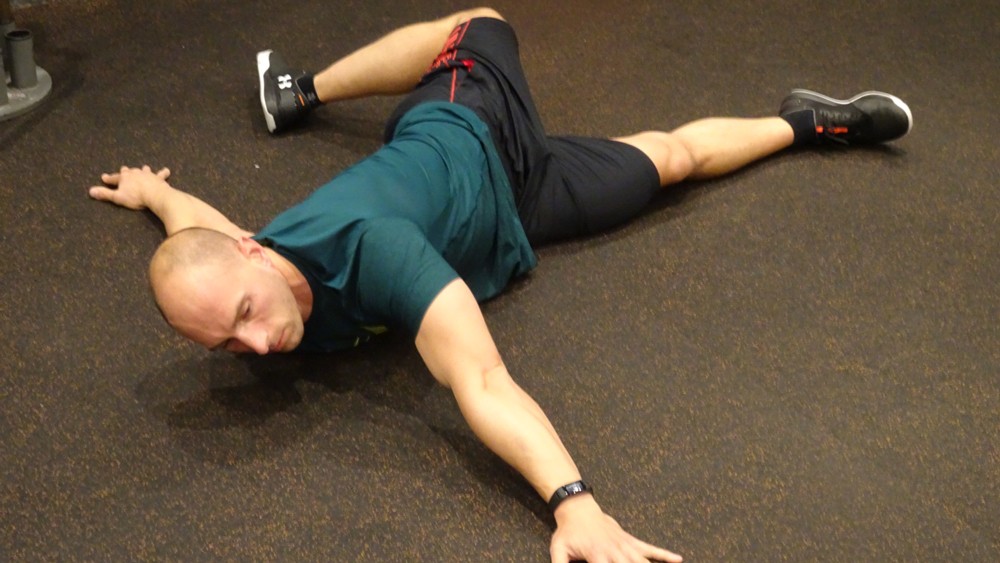
“The scorpion is a great way to stretch a long chain of muscles all the way from your quad to your upper back,” says Tidmarsh. “Lie on your front with arms spread to create a T shape. Lift your left leg and move it over your right in a wide arc, aiming to land your left foot as close to your right hand as possible. Do two or three reps to create distance, then hold at your maximum range for 30 seconds. Repeat on the other side.”
J hang
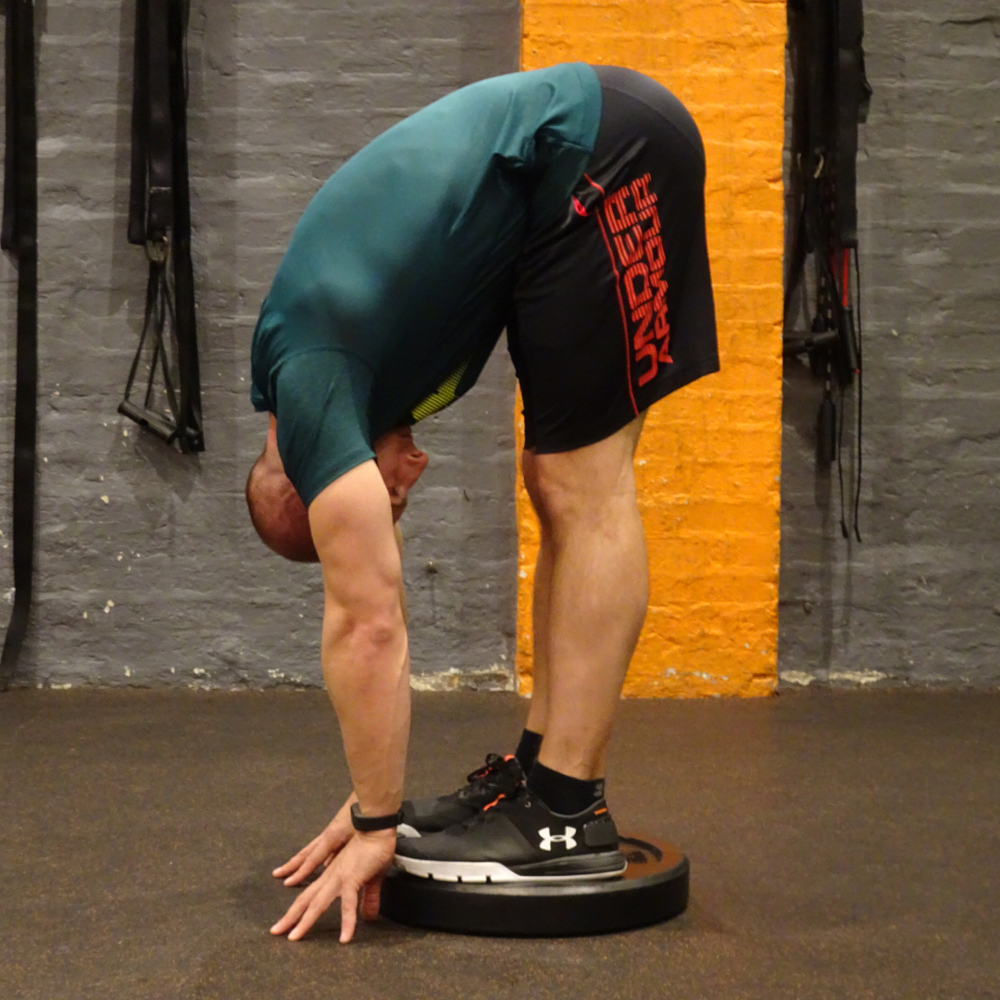
“This is a simple and effective way to stretch your entire posterior chain, lengthening your back and hamstrings,” says Tidmarsh. “Stand on a small step, with your feet shoulder-width apart. Tuck your chin into your chest and slowly “roll” your spine forwards to your full extension, with your arms hanging in front of you. Keeping your chin tucked, take six deep breaths, trying to increase the depth of the stretch on the exhale.”

Nick Harris-Fry is a journalist who has been covering health and fitness since 2015. Nick is an avid runner, covering 70-110km a week, which gives him ample opportunity to test a wide range of running shoes and running gear. He is also the chief tester for fitness trackers and running watches, treadmills and exercise bikes, and workout headphones.
